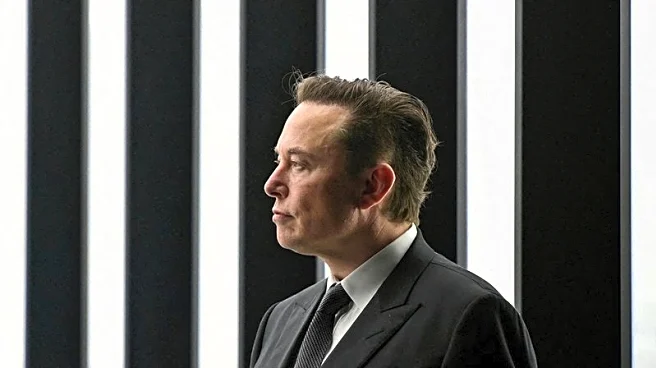What's Happening?
Dustin Moskovitz, cofounder of Facebook and Asana, recently shared his experiences as CEO of Asana, describing the role as 'quite exhausting.' Moskovitz, who led Asana for over a decade, expressed his dislike
for managing teams, stating it was not his original intention when starting the company. Despite his leadership history, Moskovitz stepped down as CEO in July, transitioning to the role of board chairman. He cited various challenges during his tenure, including political and social upheavals such as the Trump presidency and the pandemic. Moskovitz's sentiments echo those of other CEOs who have publicly acknowledged the stress and challenges associated with leading large companies.
Why It's Important?
Moskovitz's reflections highlight the demanding nature of CEO roles, which can lead to burnout and turnover among top executives. His experience underscores the broader challenges faced by leaders in navigating complex political, social, and economic landscapes. This revelation may influence how companies approach leadership roles, potentially encouraging a shift towards more sustainable management practices. It also raises questions about the expectations placed on CEOs and the support systems available to them, which could impact corporate governance and employee well-being.
What's Next?
As Moskovitz transitions to board chairman, Asana may experience changes in leadership dynamics and strategic direction. This shift could prompt discussions on leadership sustainability and the importance of aligning roles with personal strengths and preferences. Companies might explore alternative leadership structures or support mechanisms to mitigate burnout and enhance executive performance. Stakeholders, including investors and employees, will likely monitor how these changes affect Asana's growth and operational strategies.
Beyond the Headlines
Moskovitz's candid remarks may spark broader conversations about the cultural expectations of CEOs and the pressures they face. This could lead to a reevaluation of leadership roles and the development of more supportive environments that prioritize mental health and work-life balance. The discussion may also influence future leaders to consider their personal inclinations and the potential impact of external factors on their roles.












